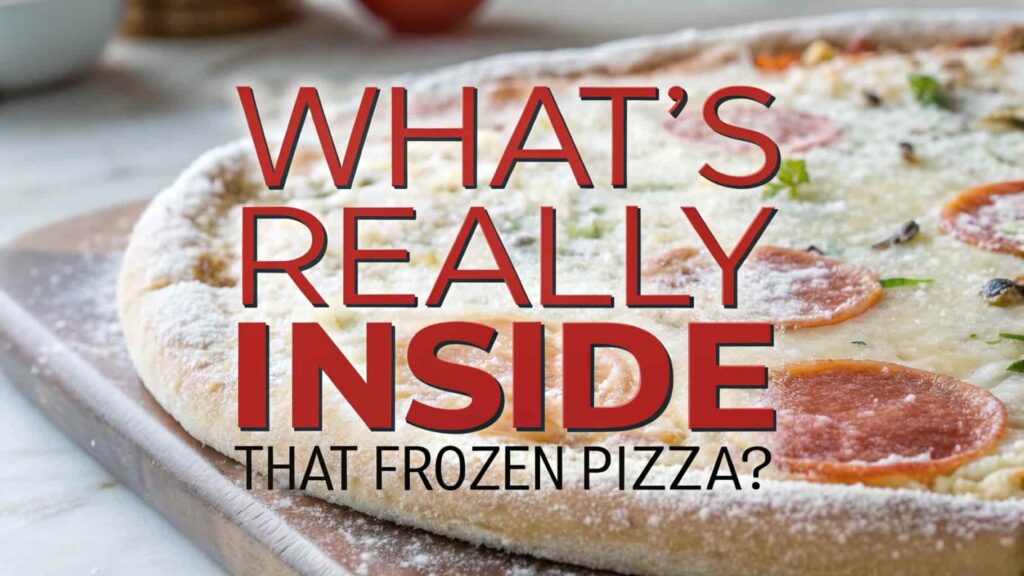Picture this: You come home after a long day, open your freezer, and grab that perfectly round, cheese-covered masterpiece—your beloved frozen pizza. It’s quick, it’s easy, and it’s delicious. But have you ever wondered what’s really inside that crispy crust and gooey cheese?
Is your frozen pizza a tasty, convenient treat, or a chemical-laden science experiment? Once you see what’s hiding in the ingredients, you might never look at that pizza the same way again. But don’t worry—I’m not here to ruin your love for pizza! Instead, let’s break down the ingredients and find out what’s really going on inside that frozen box.
1. The Dough: More Than Just Flour and Water
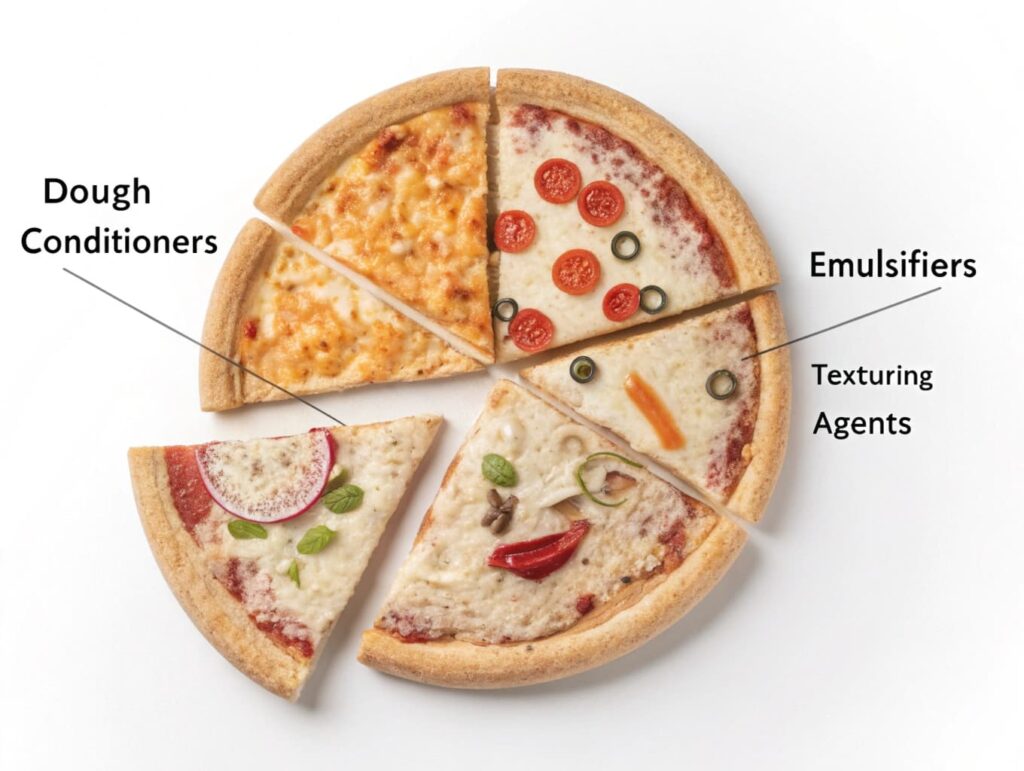
You might think the crust is just simple bread, but frozen pizza dough is often loaded with preservatives, emulsifiers, and artificial conditioners to keep it from drying out or going bad too quickly. Some common additives include L-cysteine (a dough softener), calcium propionate (a mold inhibitor), and azodicarbonamide (used to bleach the flour—yep, the same chemical found in yoga mats!).
Of course, not all frozen pizzas contain these, but many brands sneak in these extras to improve shelf life. So next time you bite into that crispy crust, remember—it’s more than just flour and water.
2. The Sauce: Is That Really Tomatoes?
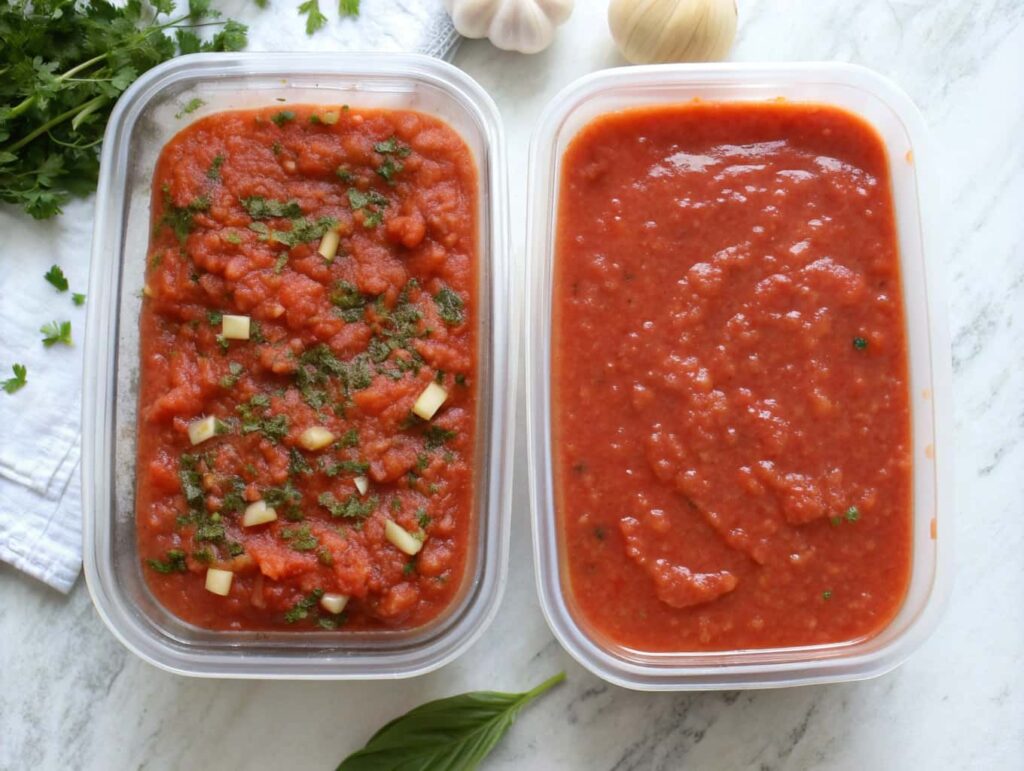
A good pizza sauce should be made from tomatoes, olive oil, garlic, and herbs, right? Well, frozen pizza sauce often contains high-fructose corn syrup, modified starches, and citric acid to enhance flavor and texture. Some brands even use dehydrated tomato paste mixed with artificial flavors instead of real, fresh tomatoes.
What’s worse, some sauces include monosodium glutamate (MSG), an additive that enhances taste but can cause headaches or other reactions in sensitive people. If your sauce tastes unnaturally sweet, it might be packed with hidden sugars and additives.
3. The Cheese: Real Dairy or Fake?

Frozen pizza cheese looks real, but is it? Many brands use “cheese blends” or “cheese-like substances” made with a mix of real dairy and vegetable oils, emulsifiers, and anti-caking agents. If you see “modified food starch” or “cellulose” in the ingredients, that’s a sign your cheese has been tweaked for better shelf stability.
Some frozen pizzas even use imitation mozzarella—a processed cheese substitute that contains less milk and more fillers. While these tricks help keep costs down, they also mean you’re not getting the rich, creamy taste of real cheese.
4. The Meat: What’s Really in Those Pepperoni Slices?

If you love meat toppings like pepperoni, sausage, or bacon, brace yourself. Many frozen pizzas use mechanically separated meat—a paste-like substance made by forcing meat scraps through a sieve. These processed meats are often packed with sodium nitrate, artificial smoke flavor, and BHA/BHT preservatives, which have been linked to potential health risks.
And if you think you’re eating high-quality beef or pork, think again—many frozen pizzas use “meat substitutes” or “flavored soy protein” to mimic real meat. If you see vague terms like “meat topping” or “pepperoni-style”, it’s likely not the real deal.
5. The Mystery Additives: What Else Is Hiding in There?
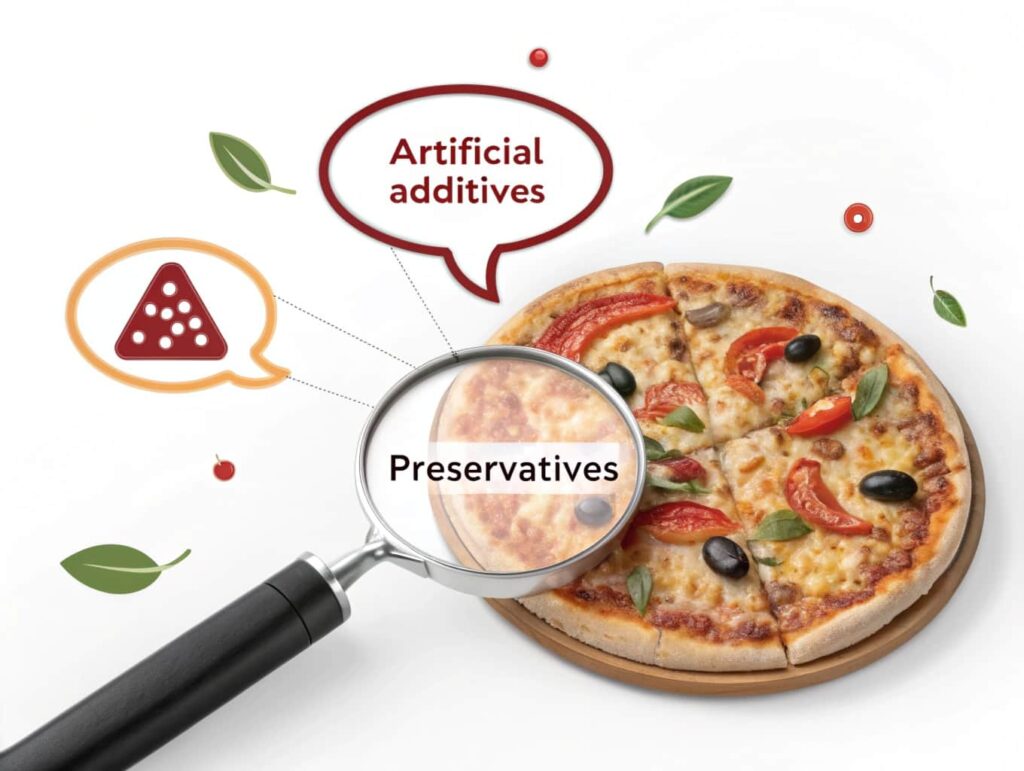
Beyond the main ingredients, frozen pizzas often contain a long list of additives to preserve color, texture, and flavor. Some of the most common ones include:
- TBHQ (tertiary butylhydroquinone): A preservative linked to potential health risks when consumed in large amounts.
- Polysorbate 80: An emulsifier used to keep ingredients from separating.
- Artificial Colors (Red 40, Yellow 5, etc.): Used to enhance the visual appeal of processed toppings.
Many of these additives are considered safe in small amounts, but over time, eating too many processed foods with artificial ingredients can have negative effects on your health.
6. The Healthier Alternatives: What to Look for When Buying Frozen Pizza
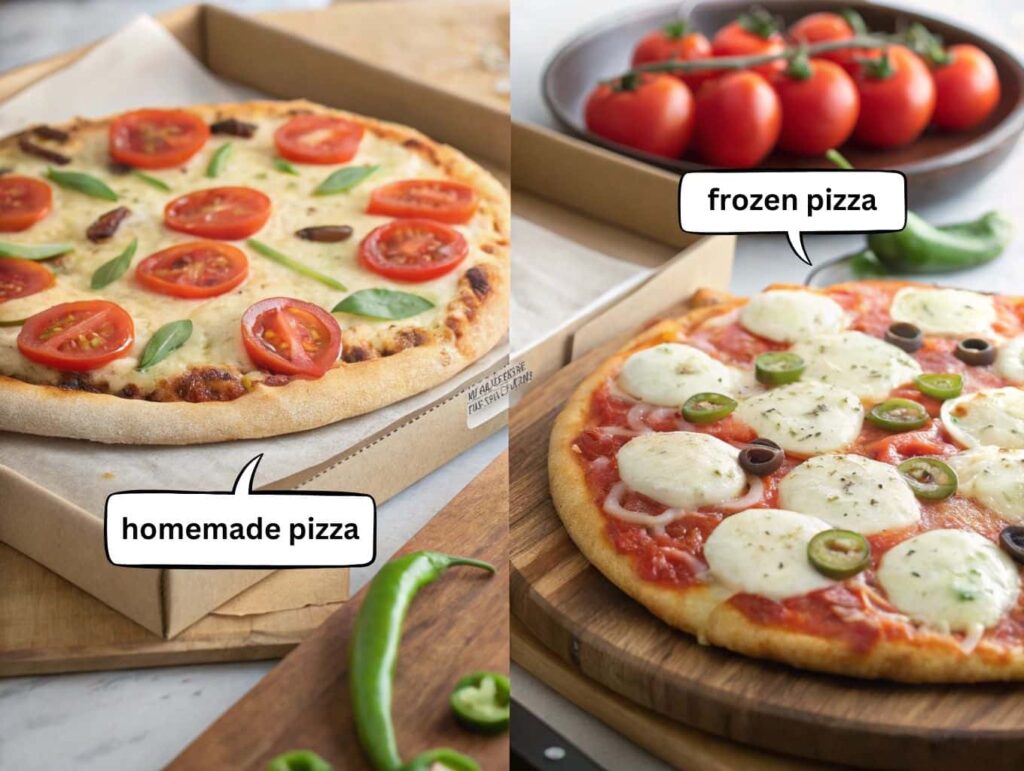
Okay, so we’ve covered some shocking truths about frozen pizza, but that doesn’t mean you have to give it up completely! If you’re craving a quick pizza fix, here’s how to choose a better frozen pizza:
- Look for short ingredient lists with real, recognizable foods.
- Choose brands that use 100% real cheese (avoid “cheese product” or “cheese blend”).
- Opt for pizzas with no artificial preservatives or colors.
- Pick a crust made from whole grains instead of refined white flour.
- Consider plant-based or organic options with fewer additives.
And if you really want to know what’s in your pizza? Make your own at home! A simple homemade pizza with fresh dough, tomato sauce, and real mozzarella takes just a few extra minutes but is much healthier.
Enhance your frozen pizza with this brilliant cooking hack that will change the way you prepare it for a tastier, crispier result.
Final Thoughts: Is Frozen Pizza Worth It?

Frozen pizza will always be a convenient option, but next time you grab one, take a moment to check the label. Not all frozen pizzas are created equal—some are packed with real ingredients, while others are loaded with chemicals and fillers.
By being aware of what’s inside your food, you can make better choices without giving up your favorite late-night snack. So, the next time you open your freezer, ask yourself: Is this a pizza… or just a science experiment in disguise?
What do you think—will you still eat frozen pizza after knowing the truth? Let me know in the comments!


